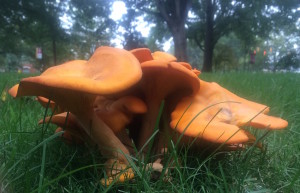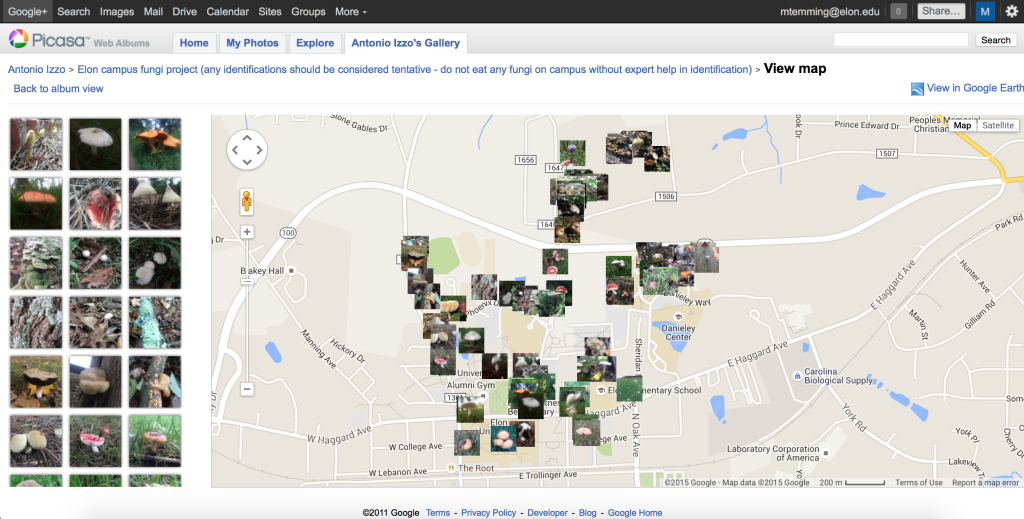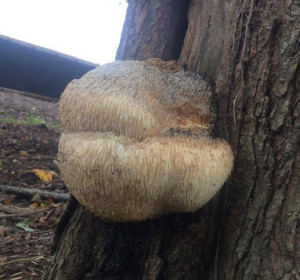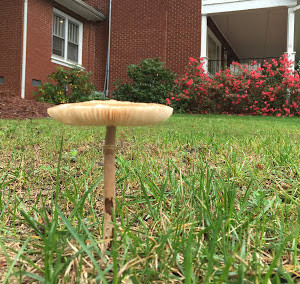Bio prof launches Elon Campus Fungi Project
Fungi fans, unite! Bio professor Antonio Izzo recently launched the Elon Campus Fungi Project, an effort to increase awareness about Elon’s incredible biodiversity—particularly in regards to the wide range of fungal species across campus. Basically, Izzo is crowdsourcing the creation of an online “digital foray” to record where and what different types of fungi are growing all around us here at Elon.
What’s a foray, anyway?
Occasionally, mycologists (scientists who study fungi) get together and scour a particular area for interesting fungal species. These gatherings, known as “forays,” are based on the philosophy that “100 eyes are better than 2.” Each mycologist is limited both by the area they can cover and their personal biases on how/where to look for fungi. But together, mycologists can garner a more comprehensive understanding of a fungal population.
Professor Izzo’s digital foray makes mycologists of us all. Anyone on Elon’s campus (be they students, faculty, staff, and even visitors) with the ability to take GPS-embedded photos can contribute to the Campus Fungi Project’s digital foray. See a cool mushroom? Snap a pic! Email GPS-embedded photos to Izzo, who will add them to the digital foray he is compiling on Picasa, a Google’s web photo album program.
Izzo chose to use Picasa because it’s a free, collaborative tool, and students and faculty alike seem pretty well versed in navigating Google tools. Moreover, thanks to the coordinates attached to each photo, Picasa can automatically map out each fungus’ location on campus. Since some fungi fruit and then disappear for a while before reemerging, the timestamp on each photo can tell users when fungi on the map were in bloom. In this way, the digital foray is really an interactive database that students and faculty with can use for admiring and studying residential fungal population.
Izzo also encourages project participants to show off their fungal photos on social media with the hashtag #elonfungi.
Why photograph fungi?
According to Izzo, the main goal of this project is to raise student awareness in the biology department (and beyond) about the cool diversity of fungi. On Elon’s botanical-garden-status campus, people pay a lot of attention to the diversity of plants, but “we just don’t give fungi the same level of attention,” Izzo says. Which is a real shame because plant and fungi biodiversity are intimately linked, and there are lots of fascinating fungal species to check out within walking distance.
Even the people who do pay rigorous attention to under-appreciated fungi often revisit the same areas to conduct their studies. Izzo hopes the Elon Campus Fungi Project will turn up interesting fungi sprouting in previously un-investigated areas.
Who can participate?
You don’t need any fungal expertise to participate in the project. All you need is a GPS-enabled device with a camera. That’s it. You don’t even have to identify your fungus subject before submitting a picture (especially since such classification often involves closely examining the fungus’ spores or even slicing it open).
To date, a mix of students and faculty have submitted over 100 entries to the foray, which already features dozens of fungi of all shapes, sizes, and colors, from Elon’s main campus to the Elon Forest. “It’s kind of remarkable how out of their way students have gone to get good angles [in their fungi photos] to highlight the cool forms,” Izzo says. “You can see…art sort of mixing in with biology.”
Project scope
The Elon Campus Fungi Project started on October 1 and is set to run through the 2015-2016 school year, since different seasons bring out different types of fungi. But Izzo hopes the project will have an impact that lasts longer than the school year. Izzo has thus far been fielding all the photo submissions, but he envisions the digital foray ultimately becoming a public folder where anyone can upload pictures. He also imagines implementing similar systems to collect information on other species around campus, and says that students in the future might even use a digital foray—with more systematic methods—to collect data for research.




 Follow
Follow

